Vidya A. Chhabria
EDA Corpus: A Large Language Model Dataset for Enhanced Interaction with OpenROAD
May 04, 2024Abstract:Large language models (LLMs) serve as powerful tools for design, providing capabilities for both task automation and design assistance. Recent advancements have shown tremendous potential for facilitating LLM integration into the chip design process; however, many of these works rely on data that are not publicly available and/or not permissively licensed for use in LLM training and distribution. In this paper, we present a solution aimed at bridging this gap by introducing an open-source dataset tailored for OpenROAD, a widely adopted open-source EDA toolchain. The dataset features over 1000 data points and is structured in two formats: (i) a pairwise set comprised of question prompts with prose answers, and (ii) a pairwise set comprised of code prompts and their corresponding OpenROAD scripts. By providing this dataset, we aim to facilitate LLM-focused research within the EDA domain. The dataset is available at https://github.com/OpenROAD-Assistant/EDA-Corpus.
IR-Aware ECO Timing Optimization Using Reinforcement Learning
Feb 12, 2024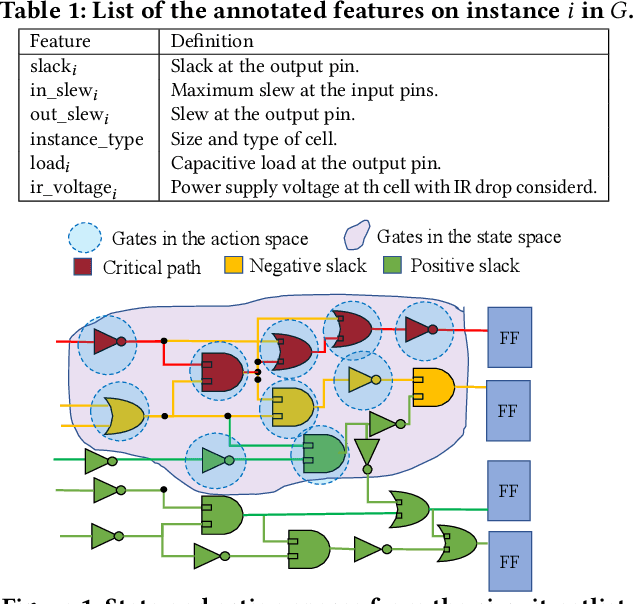

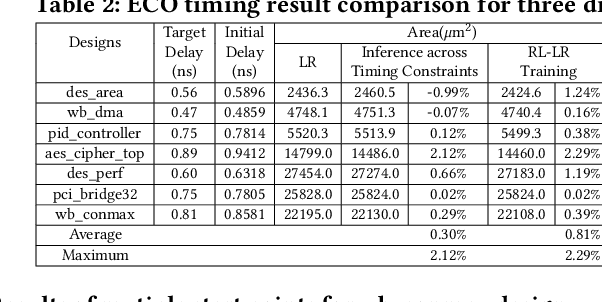
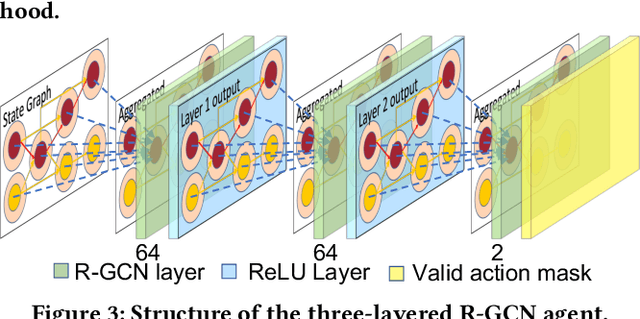
Abstract:Engineering change orders (ECOs) in late stages make minimal design fixes to recover from timing shifts due to excessive IR drops. This paper integrates IR-drop-aware timing analysis and ECO timing optimization using reinforcement learning (RL). The method operates after physical design and power grid synthesis, and rectifies IR-drop-induced timing degradation through gate sizing. It incorporates the Lagrangian relaxation (LR) technique into a novel RL framework, which trains a relational graph convolutional network (R-GCN) agent to sequentially size gates to fix timing violations. The R-GCN agent outperforms a classical LR-only algorithm: in an open 45nm technology, it (a) moves the Pareto front of the delay-area tradeoff curve to the left and (b) saves runtime over the classical method by running fast inference using trained models at iso-quality. The RL model is transferable across timing specifications, and transferable to unseen designs with zero-shot learning or fine tuning.
Encoder-Decoder Networks for Analyzing Thermal and Power Delivery Networks
Oct 27, 2021

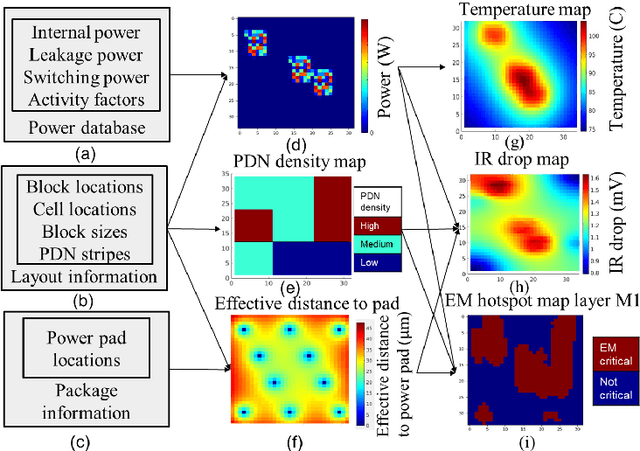

Abstract:Power delivery network (PDN) analysis and thermal analysis are computationally expensive tasks that are essential for successful IC design. Algorithmically, both these analyses have similar computational structure and complexity as they involve the solution to a partial differential equation of the same form. This paper converts these analyses into image-to-image and sequence-to-sequence translation tasks, which allows leveraging a class of machine learning models with an encoder-decoder-based generative (EDGe) architecture to address the time-intensive nature of these tasks. For PDN analysis, we propose two networks: (i) IREDGe: a full-chip static and dynamic IR drop predictor and (ii) EMEDGe: electromigration (EM) hotspot classifier based on input power, power grid distribution, and power pad distribution patterns. For thermal analysis, we propose ThermEDGe, a full-chip static and dynamic temperature estimator based on input power distribution patterns for thermal analysis. These networks are transferable across designs synthesized within the same technology and packing solution. The networks predict on-chip IR drop, EM hotspot locations, and temperature in milliseconds with negligibly small errors against commercial tools requiring several hours.
OpeNPDN: A Neural-network-based Framework for Power Delivery Network Synthesis
Oct 27, 2021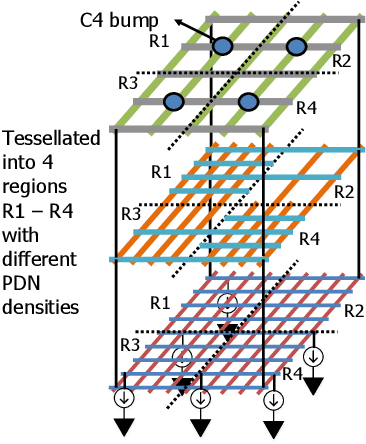


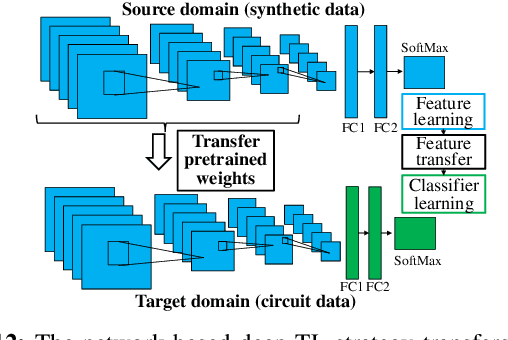
Abstract:Power delivery network (PDN) design is a nontrivial, time-intensive, and iterative task. Correct PDN design must account for considerations related to power bumps, currents, blockages, and signal congestion distribution patterns. This work proposes a machine learning-based methodology that employs a set of predefined PDN templates. At the floorplan stage, coarse estimates of current, congestion, macro/blockages, and C4 bump distributions are used to synthesize a grid for early design. At the placement stage, the grid is incrementally refined based on more accurate and fine-grained distributions of current and congestion. At each stage, a convolutional neural network (CNN) selects an appropriate PDN template for each region on the chip, building a safe-by-construction PDN that meets IR drop and electromigration (EM) specifications. The CNN is initially trained using a large synthetically-created dataset, following which transfer learning is leveraged to bridge the gap between real-circuit data (with a limited dataset size) and synthetically-generated data. On average, the optimization of the PDN frees thousands of routing tracks in congestion-critical regions, when compared to a globally uniform PDN, while staying within the IR drop and EM limits.
Thermal and IR Drop Analysis Using Convolutional Encoder-Decoder Networks
Sep 18, 2020
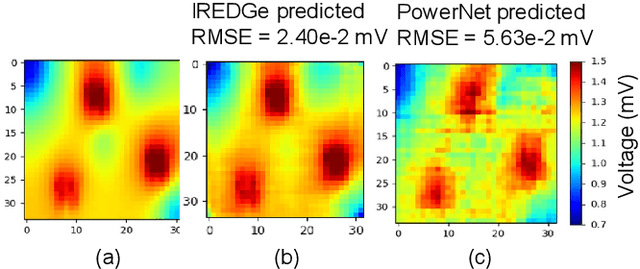
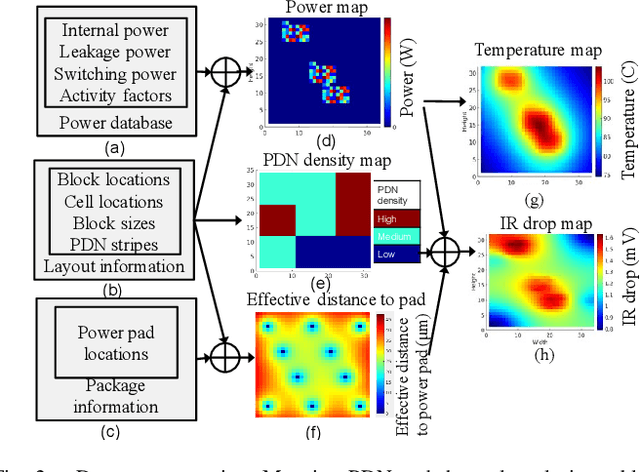
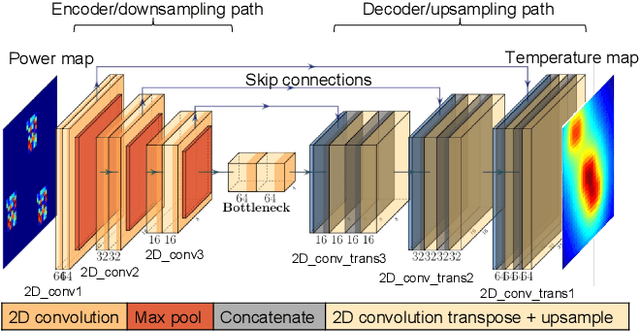
Abstract:Computationally expensive temperature and power grid analyses are required during the design cycle to guide IC design. This paper employs encoder-decoder based generative (EDGe) networks to map these analyses to fast and accurate image-to-image and sequence-to-sequence translation tasks. The network takes a power map as input and outputs the corresponding temperature or IR drop map. We propose two networks: (i) ThermEDGe: a static and dynamic full-chip temperature estimator and (ii) IREDGe: a full-chip static IR drop predictor based on input power, power grid distribution, and power pad distribution patterns. The models are design-independent and must be trained just once for a particular technology and packaging solution. ThermEDGe and IREDGe are demonstrated to rapidly predict the on-chip temperature and IR drop contours in milliseconds (in contrast with commercial tools that require several hours or more) and provide an average error of 0.6% and 0.008% respectively.
 Add to Chrome
Add to Chrome Add to Firefox
Add to Firefox Add to Edge
Add to Edge